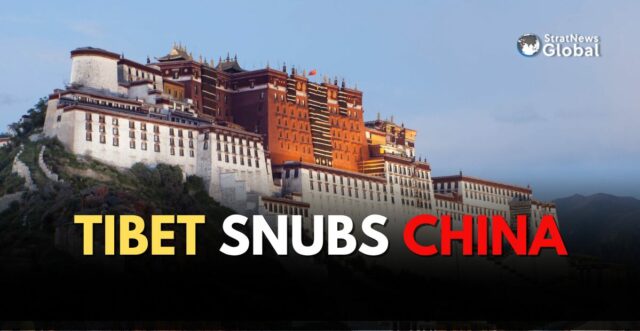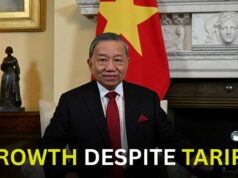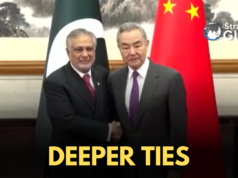China’s newly appointed embassy spokesperson Yu Jing appears to have a flair for the dramatic: posting news on X about her arrival in India on Saturday along with some official (and internationally discredited) tropes about Tibet.
Recently, we noticed some comments on Xizang-related affairs in some Indian media.
Xizang has been part of China since ancient times. Xizang-related affairs are purely China’s internal affairs that brook no foreign interference. Reincarnation of Living Buddhas comes with a set… pic.twitter.com/TG0Fa7jqKZ— Yu Jing (@ChinaSpox_India) August 17, 2024
Sample this: Tibet is an internal matter of China, the territory had always been part of China and no foreign interference would be tolerated. All known and familiar.
She then turned to an issue which the officially atheist Chinese state seems enormously preoccupied with these days: reincarnation!
Reincarnation is a hallowed Buddhist tradition and Yu Jing claimed the Chinese government deeply respected it. But she also insisted that Chinese laws and religious practices applied with respect to the reincarnation of the Dalai Lama and the Panchen Lama.
She said the current Dalai Lama (the 14th) was recognised according to these rituals and with the approval of the then-central Chinese government.
Consequently, Yu jing stressed, future reincarnations must comply with both religious conventions and Chinese laws and the media must respect China’s core interests and not promote separatist activities.
Tibetan Response
The response from the Tibetan establishment in India came in two forms: from the Dalai Lama’s office in Delhi, and an interview given earlier by the political head of the exiled Tibetan community, the Sikyong Penpa Tsering to StratNewsGlobal, where he took the Chinese bull by the proverbial horns.
But first Dhundup Gyalpo, Secretary of the Bureau of His Holiness the Dalai Lama in New Delhi, challenged the Chinese government’s claims about the selection of the 14th Dalai Lama in 1940, as misleading.
Replying to @ChinaSpox_India with excerpts from a past publication in 1993.
The Chinese Government claims in the White Paper, as did past Guomindang governments, that it played a decisive role, through its envoy Wu Zhongxin, in the selection and installation of the Fourteenth…
— Dhundup Gyalpo (@DhunGyalpo) August 17, 2024
There was no approval from the Chinese government. He noted that the Regent of Tibet announced the current Dalai Lama’s name to the Tibetan National Assembly in 1939, a year before any Chinese envoy arrived in Lhasa.
The candidate was unanimously confirmed by the assembly, and the enthronement ceremony occurred on February 22, 1940.
Gyalpo asserted that the Chinese envoy, Wu Zhongxin, like representatives from Bhutan, Sikkim, Nepal, and British India, played no special role in the ceremony.
Gyalpo also referenced Sir Basil Gould, the British Political Officer representing British India at the time, who said the official Chinese version of the events had been fabricated before the actual enthronement.
According to Gyalpo, the Chinese government continues to rely on this fictitious account to support its claims. He pointed out that a widely circulated photograph of the Dalai Lama with Wu Zhongxin, often used by Chinese media to suggest Wu’s involvement in the ceremony, was actually taken days later during a private audience.
Ngabo Ngawang Jigme, a former Vice-Chairman of the Standing Committee of China’s National People’s Congress, had previously refuted Wu’s claims, labelling them as distortions of historical facts.
“China cannot handle unpredictability. So they don’t know when His Holiness the Dalai Lama will talk about emanation, which means choosing somebody before one’s own demise. Or reincarnation. That’s finding a new body in the next life”.
Tibet’s Sikyong Penpa Tsering, told StratNewsGlobal in an exclusive ‘The Gist’ interview with Amitabh P. Revi. (To watch the full interview : Click Here) that:
“China tries to seek legitimacy of their rule over Tibet, through the international community because they know that they have no legitimacy of the rule in Tibet in whatever sense.”
China’s Strategic Use of “Xizang” and the Tibet Issue
A word on China’s use of the word Xizang for Tibet would be useful here. It underscored the tension between China and those who advocate for Tibetan autonomy or independence.
Since last year, China has increasingly used “Xizang,” the pinyin transliteration of Tibet, in official communications.
This shift is seen by some as an attempt to disconnect younger generations from the historical and cultural identity of Tibet, reinforcing the idea that Tibet has always been an inseparable part of China.
The US stepped in with morale boosting legislation when President Joe Biden signed the “Promoting a Resolution to the Tibet-China Dispute Act,” also known as the Resolve Tibet Act, into law. This legislation bolsters U.S. support for Tibet, stressing the importance of peaceful dialogue between China and Tibetan leaders to address the ongoing dispute over Tibet’s status.
The law is a warning to China that its activities in Tibet are being closely monitored and will not go unchallenged in the days ahead.
Research Associate at StratNewsGlobal, A keen observer of #China and Foreign Affairs. Writer, Weibo Trends, Analyst.
Twitter: @resham_sng





